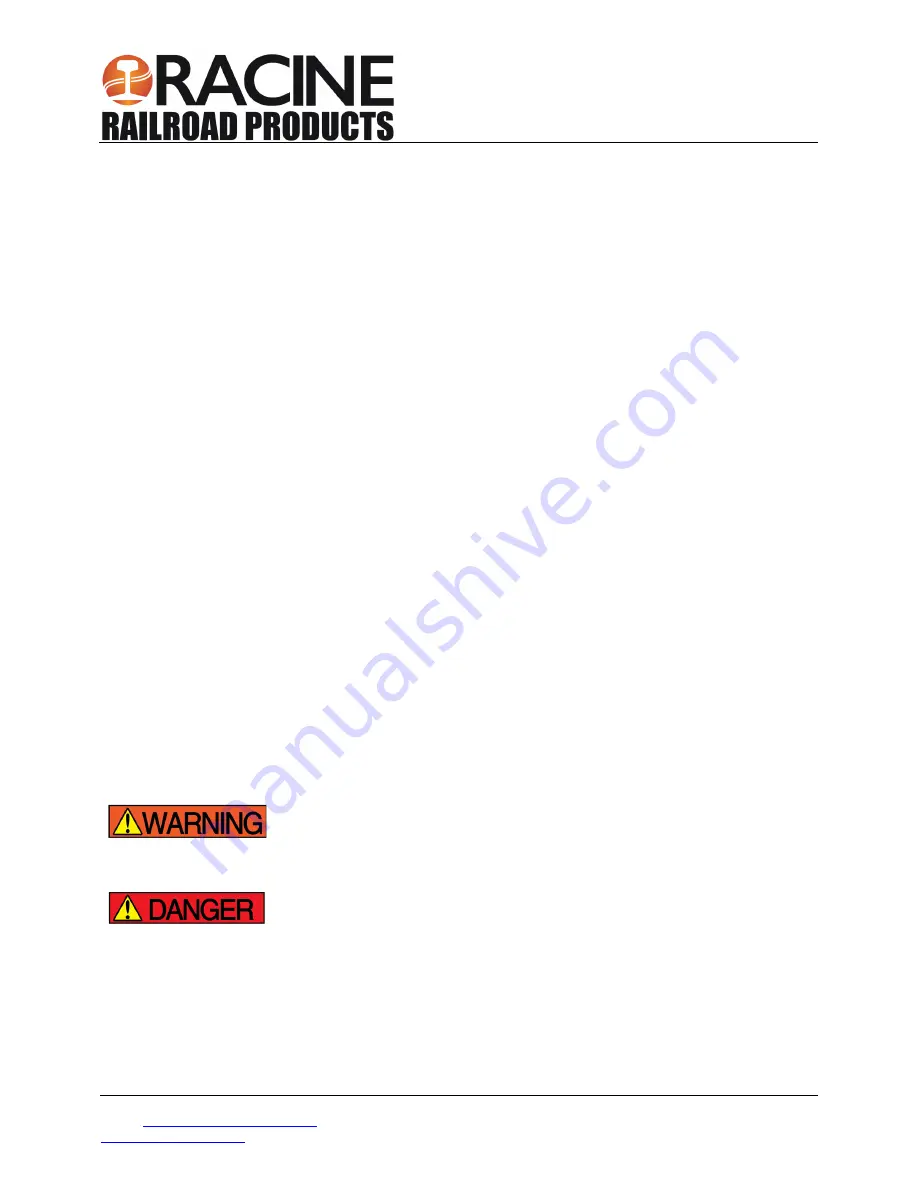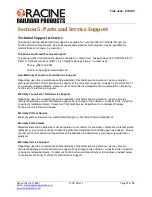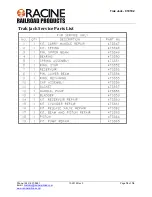
Trak Jack - 910192
Phone: (262) 637-9681
10.2019 Rev 3
Page
7
of
18
Before Operating
•
The total load lifted or supported by the jack must never exceed the rated capacity. Excess pressure
can result in personal injury. Use a jack with enough capacity to lift a load. Keep clear of lifted loads.
•
Inspect each jack before each usage or shift to prevent unsafe conditions from developing. Properly
support the jack. Do not lift people or loads with people on them.
•
Do not put poorly balanced or off-center loads on the jack pad or jack. The load can tip and cause
personal injury. Do not use in unstable or hazardous position.
•
The jack must be used on flat surfaces to be able to carry the load correctly. The base must be
completely supported. Do not push or lift on the ends of the base.
•
As the load is lifted, use blocks or cribs to guard against a falling load.
•
To help prevent personal injury, do not allow personnel to go under, or work on, a load before it is
properly cribbed or blocked. All personnel must be clear of a load before lowering or lifting.
•
Lift only dead weight loads. Do not add additional weight to a lifted load. Do not use jacks that are
damaged, altered or in poor condition.
•
The reservoir must have enough hydraulic fluid to fully stroke the jack. Use only approved hydraulic
fluids.
•
Users must make sure that all safety related decals and stickers are whole and readable. Replace
those which become unreadable.
•
Never use extreme heat to disassemble a hydraulic ram or cylinder. Metal fatigue can lead to unsafe
conditions.
•
Be aware of possible "pinch points" of the jack and stay clear to avoid personal injury.
•
When lifting with the edge of the lifting toe, place a wedge between the load and the top of the lifting
toe to avoid bending the cylinder column.
•
Carry the jack only by the carrying handle. Make sure the jack is in the fully lowered position. Remove
operating levers when not in use to avoid accidental dislocation of the jack and reduce the tripping
hazard.
•
Make sure all personnel are clear of the load before lifting or lowering.
Do not
use extenders unless
authorized by a qualified person.
Never use this tool when working around electrified rail unless it is de-
energized or you have been properly trained to work on electrified rail. If
you are not sure the rail is live or not, you must treat it as being live and
dangerous to life.
Make sure that all personnel are clear of the load before attempting to
raise or lower the jack. Serious injury or death could result from the
improper use of this hydraulic jack.




































